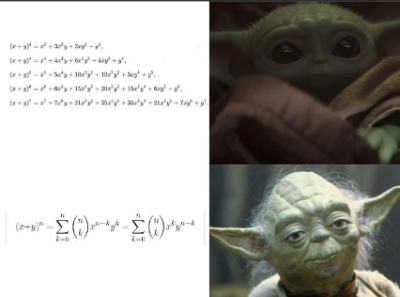Binomial theorem (AAHL 1.10)
Keywords
| Binomial Theorem | 二項定理 | 이항정리 | 二项式定理 |
| Rational exponents | 有理指数 | 유리 지수 | 有理指数 |
| Expansion | 展開 | 전개 | 展开 |
| Infinite series | 無限級数 | 무한급수 | 无穷级数 |
| Convergence | 収束 | 수렴 | 收敛 |
| Approximation | 近似 | 근사 | 近似 |
| Percentage error | 誤差率 | 백분율 오차 | 百分比误差 |

Factual Inquiry Questions
| Conceptual Inquiry Questions
| Debatable Inquiry Questions
|
Exploring the Binomial Theorem
1. What happens to the approximation of (1 + x)^0.5 as we increase the number of terms in the expansion? Use the applet to change the number of terms and observe the effects.
2. For what values of x is the approximation (1 + x)^0.5 = 1 + 0.5x + 0.5(0.5 - 1)x^2/2! accurate to two decimal places? Experiment with different values of x and record your observations.
3. How does the graph of the approximation compare to the graph of the actual function as the number of terms increases? Use the applet to visualize and compare.
4. Can you find a value of x where the binomial expansion does not provide an accurate approximation, regardless of the number of terms used? Hint: Consider the domain of the function.
5. What is the percentage error of the approximation when x = 0.2 for three terms compared to the actual value? Calculate this using the applet's provided values.
6. How would changing the exponent from 0.5 to another fraction (e.g., 0.3 or 0.7) affect the convergence of the series? Use the applet to explore different exponents.
7. Challenge: Using the applet, can you approximate the value of sqrt(2) using a binomial expansion? Record the number of terms needed for an approximation accurate to three decimal places.
8. Use the applet to demonstrate what happens to the binomial expansion of (1 + x)^n as n approaches infinity. Can you explain why this happens based on your observations?
Extension Activity: Explore the binomial theorem's use in probability and statistics. How might the concepts of this applet apply to calculating probabilities for binomial distributions?

